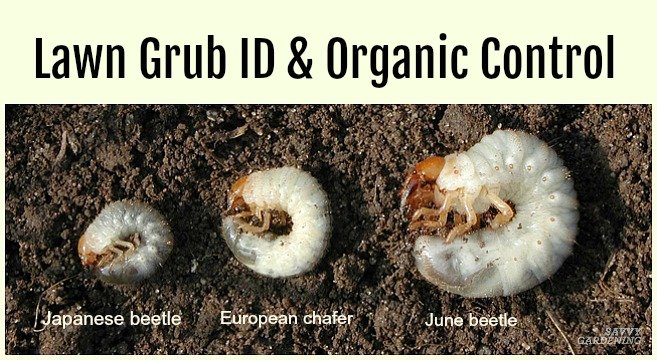
So, how do you stay ahead of these little nuisances? A seasonal grub worm control schedule can be your best friend. Just like scheduling a dentist appointment or planning your spring cleaning, keeping tabs on grub control can save you stress and money in the long run. The right approach involves timing, the right products, and a bit of vigilance throughout the year.
Understanding Grub Worms
Grub worms are the larvae of various beetles, including Japanese beetles and June bugs. They lay their eggs in the soil, where they hatch into grubs. These small, C-shaped creatures spend their time feeding on grass roots and organic matter, which can lead to brown patches or even dead spots in your lawn.
A common question might be, “How do I know if I have a grub problem?” Here’s the thing: If you notice patches of grass that pull up easily (think of it like peeling up a carpet), or if you see birds or other animals feasting on your lawn, it could be a sign of grubs lurking below. Being proactive can help prevent these issues from ruining your garden’s beauty.
Spring: The Start of the Grub Cycle
Spring is when the gardening season kicks off, but it’s also when grub worms begin to hatch. You might be wondering why this matters—well, since they’re just emerging, it’s a prime time for prevention. Applying a preventive treatment in late spring, around mid-April to early May, can help control these pests before they become a larger issue.
Products that contain imidacloprid or chlorantraniliprole can be effective at this stage. It’s like putting up a barrier to keep those unwanted guests from getting into your party. Make sure to follow the instructions carefully and apply them evenly across your lawn. Timing is crucial here, so mark your calendar!
Why Preemptive Measures Matter
By treating your lawn while the grubs are still young, you increase your chances of preventing a full-blown infestation later. Think of it as being proactive rather than reactive. It’s much easier to avoid a problem than it is to fix one once it’s established.
Additionally, you might consider overseeding your lawn during this time. Strengthening your grass can help it better withstand any damage grubs might cause. A healthy lawn acts like a shield against pests!
Summer: Monitoring and Reactive Measures
Once summer arrives, your primary focus should shift to monitoring your lawn. This time of year is crucial, as grubs tend to mature and become more active, which means more damage can occur if left unchecked. Keep an eye out for those telltale patches, and be prepared to act if necessary.
If you find signs of grubs, don’t panic! There are several reactive measures you can take. Applying a curative treatment can help eliminate the adult grubs. Products containing milky spore, which targets grubs specifically, are often recommended. Just remember to follow the product instructions for the best results.
Watering: A Key Component
During summer, it’s essential to maintain proper lawn watering. Keeping your lawn well-hydrated helps grass recover from any damage and makes it less appealing to beetles looking to lay their eggs. A general rule of thumb is to aim for about an inch of water per week, either from rainfall or irrigation. Just check the moisture level in your soil to ensure it’s not too dry or too soggy.
Fall: Clearing the Path for Winter
As fall rolls around, the focus shifts from actively battling grubs to preparing for the winter months. This is a great time to consider using a preventative treatment again as the weather transitions. Grubs will be laying their eggs soon, so this is your chance to stop them in their tracks.
Applying a product that targets grub larvae in late summer to fall helps create a defensive line. The goal here is to interrupt their life cycle before they have the chance to turn into a problem next spring. Remember to keep raking up fallen leaves and debris, which can create a cozy home for these pests and attract more beetles.
Feeding Your Lawn
Feeding your lawn in the fall is another important task. Using a quality fertilizer can help your grass recover from the stresses of summer. A healthy lawn is your best defense against grubs. It’s like giving your garden a nice blanket to keep warm during winter.
Winter: Maintenance and Preparation
During the winter months, grubs will be dormant, but that doesn’t mean you can sit back and relax completely. This is a great time to evaluate your lawn care practices and consider what worked well and what didn’t over the past year. Are there areas you need to improve? Did your grub control measures show effective results?
Consider collecting soil samples to check for any necessary adjustments in nutrients. Planning your grub control strategy for next spring can make all the difference when it comes to your lawn’s health.
Year-Round Monitoring
Even in the colder months, it’s wise to check your lawn periodically. While grubs are usually hidden away, you can still observe your lawn’s overall health. Look for signs of other pests or diseases, as these can work together with grubs to cause issues.
Controlling grub worms doesn’t have to be an overwhelming task, but it does require a bit of planning and attention throughout the year. By following a seasonal grub worm control schedule, you can keep these critters in check and ensure your lawn stays vibrant and healthy.
From early prevention in the spring to monitoring and reactive measures in the summer, each season plays a vital role in managing grubs. Remember, a beautiful lawn doesn’t just happen overnight; it takes consistent effort and care. So, keep that calendar handy, and let’s celebrate those lush green lawns together!
